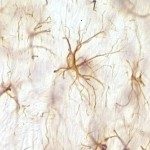Link to Pubmed [PMID] – 37231269
Link to DOI – 10.1007/s00018-023-04779-8
Cell Mol Life Sci 2023 May; 80(6): 164
The α7 nicotinic acetylcholine receptor (nAChR), a potential drug target for treating cognitive disorders, mediates communication between neuronal and non-neuronal cells. Although many competitive antagonists, agonists, and partial-agonists have been found and synthesized, they have not led to effective therapeutic treatments. In this context, small molecules acting as positive allosteric modulators binding outside the orthosteric, acetylcholine, site have attracted considerable interest. Two single-domain antibody fragments, C4 and E3, against the extracellular domain of the human α7-nAChR were generated through alpaca immunization with cells expressing a human α7-nAChR/mouse 5-HT3A chimera, and are herein described. They bind to the α7-nAChR but not to the other major nAChR subtypes, α4β2 and α3β4. E3 acts as a slowly associating positive allosteric modulator, strongly potentiating the acetylcholine-elicited currents, while not precluding the desensitization of the receptor. An E3-E3 bivalent construct shows similar potentiating properties but displays very slow dissociation kinetics conferring quasi-irreversible properties. Whereas, C4 does not alter the receptor function, but fully inhibits the E3-evoked potentiation, showing it is a silent allosteric modulator competing with E3 binding. Both nanobodies do not compete with α-bungarotoxin, localizing at an allosteric extracellular binding site away from the orthosteric site. The functional differences of each nanobody, as well as the alteration of functional properties through nanobody modifications indicate the importance of this extracellular site. The nanobodies will be useful for pharmacological and structural investigations; moreover, they, along with the extracellular site, have a direct potential for clinical applications.









